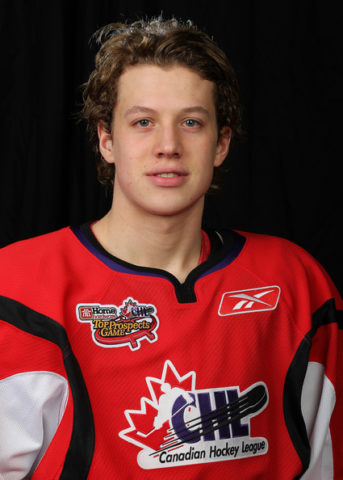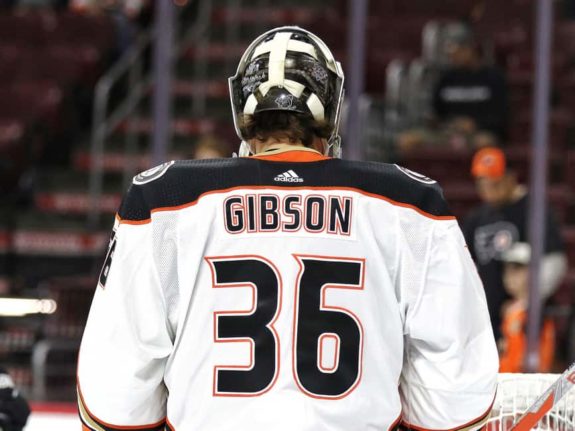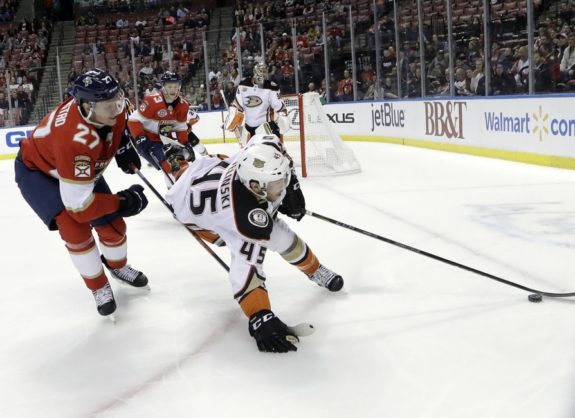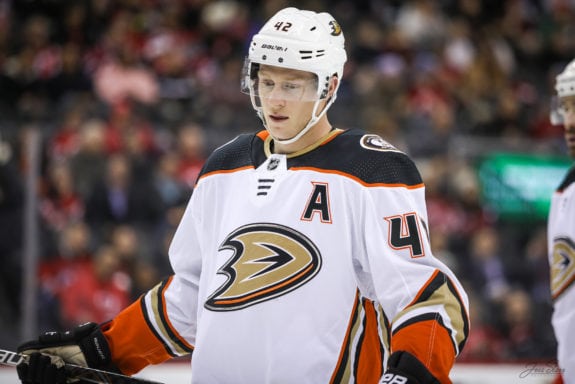With 14 games remaining in the regular season, the Anaheim Ducks aren’t mathematically eliminated from playoff contention, but it’s safe to say the season is over. They currently sit 27th in the NHL, and after drafting ninth overall last June, they are primed for another top-10 pick on June 26 in Montreal.
Related: 2008 NHL Draft – 5 Forgotten Picks
Until recently, the Ducks had to do most of their damage late in the first round and beyond. In fact, they’ve only had three top 10 picks in the last 14 years. With all the success they’ve had in the draft, the 2011 NHL Entry Draft makes a case to be the Ducks’ most successful of all time. It’s their only draft in which every single player selected played in at least one NHL game, three of which still play prominent roles on the Ducks’ roster today. It’s time to sit back and reminisce about the Anaheim Ducks’ 2011 NHL Entry Draft.
No. 30 Overall: Rickard Rakell
What could go down as one of the best trades in Ducks history started out as the swapping of draft picks. The Toronto Maple Leafs, looking to move up in the draft, acquired the Ducks’ first-round pick (22nd overall) for their own first-round pick (30th overall) and a second-round pick (39th overall).

A point-per-game player in the Ontario Hockey League, there were questions about whether Rickard Rakell’s offensive upside was enough to translate at the NHL level. However, he had confidence he would be a top player and the Ducks felt comfortable enough to trade down and take him with the 30th overall selection. He wasn’t the guy they were originally trying to get, though, according to Ducks director of amateur scouting Martin Madden:
Before we made the decision to trade with Toronto, there was still one guy on our list I won’t name, but he wasn’t a consensus pick, so we traded down, and he got picked before we got Rickard at the end of the first round. And Rickard has definitely turned out to be a better player than he is.
It would pay off, as Rakell has become one of the Ducks’ most effective offensive weapons. He’s had a couple of down seasons after posting back-to-back 30-goal campaigns, but the potential is still there.
No. 39 Overall: John Gibson
The second pick involved in the trade with the Toronto Maple Leafs was used to select goaltender John Gibson of the United States National Development Team. Widely regarded as the best goalie prospect in the draft, he was still considered a fairly raw product and needed to work on his athleticism. The Ducks needed a goaltender for the future as Jonas Hiller was nearing 30. Madden said that he was surprised Gibson was available at pick 39:
We were probably a little too cute with the way we looked at things back then. We knew Nashville was looking for a goalie after the first round. Historically, they’ve liked the same players we’ve liked, and they ended up selecting a goalie – but it wasn’t John. So we were lucky to get him. He has developed into one of the top goalies in the league.

That goaltender who the Nashville Predators drafted 38th overall was Magnus Hellberg, who played a grand total of four games in the NHL. It’s safe to say the Ducks were happy to have Gibson fall to their spot. It’s not often you get a top-six scoring winger and a franchise goaltender when your first two picks are 30th and 39th, but the Ducks made quick work after trading down from the 22nd spot.
No. 53 Overall: William Karlsson
The Ducks had high hopes for William Karlsson, so much so that they considered taking him with their first-round pick. Despite not producing in Anaheim or Columbus, maybe Madden and the Ducks’ scouting staff were onto something. Since joining the Vegas Golden Knights, Karlsson has looked like a first-round talent posting 178 points in 225 games. Madden talked about the Ducks interest in Karlsson:
But doing our homework, we got a clear sense there wasn’t that much interest in him in that spot. He wasn’t even coming to the draft since he and his agent figured he was going in the third round. We just slotted him below those two guys. There was another guy in the mix that we’re not gonna name, but he was involved as well before we decided to trade down.

Karlsson wasn’t a blue-chip offensive prospect, however, his hockey sense and two-way play were enough for the Ducks to take a chance on him in the second round.
No. 65 Overall: Joseph Cramarossa
The Ducks had two third-round picks in 2011 and they used their first selection to take Mississauga St. Michael’s Majors forward Joseph Cramarossa. It was a deviation from the type of player they had selected with their previous three picks.
We thought of Joseph as a hard-working, competitive, bottom-six type guy. We thought he had more offense to his game than he’s shown so far as a pro. But he was a battler, he was gritty, he was scrappy and we thought he would be a different type of player than the two forwards we had taken at that point in the draft.
from ‘The 2011 Draft Had a Major Impact on the Ducks Franchise’, AnaheimDucks.com – 12/15/17
Vincent Trocheck was taken one pick before Cramarossa. It’s hard not to think what could have been if the Ducks’ had selected the former Florida Panther. Cramarossa currently plays for the Rockford IceHogs in the AHL. His last stint in the NHL was in 2016-17 with the Vancouver Canucks.
No. 83 Overall: Andy Welinski
The first defenseman taken by the Ducks in the 2011 draft, Andy Welinski was a project but had top-four upside if he could put everything together. He was drafted from the Green Bay Gamblers in the United States Hockey League, and the Ducks allowed him to spend four years in the NCAA with the University of Minnesota Duluth. After impressing for two years in the AHL he made his NHL debut during the 2017-18 season, playing in seven games.
Welinski hardly struck you in the face with his numbers during his draft year, but coaches, scouts, teammates, and opponents all raved about his potential. He has since validated that praise. He is a fluid skater with a hard, dangerous shot and a bit of a nasty edge to his defensive game. He is a plays a large role with the defense corps at Minnesota-Duluth and should continue to refine his technical and tactical game while with the Bulldogs.
from Hockey’s Future Prospect Profile

The Philadelphia Flyers signed him to a one-year contract on July 1, 2019. He’s currently playing for the Lehigh Valley Phantoms of the AHL.
No. 143 Overall: Max Friberg
The third Swede drafted by the Ducks in 2011, Max Friberg only played a total of six NHL games for Anaheim. He was a capable scorer at the AHL level, putting up decent numbers with Norfolk, San Diego, and St. John’s.
He’s another guy we really liked as a staff. We probably questioned his offensive upside, but we thought he was a character kid who would maximize his talent. Two years later, we were probably more excited even than when we drafted him.
The Ducks’ dealt Friberg to the Montreal Canadiens for Dustin Tokarski in 2016.
No. 160 Overall: Josh Manson
Toronto Maple Leaf fans won’t look back on this draft very kindly. Not only did the Ducks make excellent use of the picks they acquired earlier in the draft, but they also traded their sixth-round pick in 2012 for Toronto’s sixth-round pick in 2011. They used that pick to select Josh Manson.
Related: Are the Ducks Slowly Taking Flight?
The story behind how the Ducks drafted Manson is actually pretty remarkable. He had been playing forward for most of his young career and had just transitioned to defense playing for the Salmon Arm Silverbacks in the British Columbia Hockey League. Madden had actually never seen Manson play, and was persuaded by Ducks scout Glen Cochrane. He was so convinced that Josh would be a really good prospect that he was the driving force behind the Ducks making that trade with Toronto.

It’s turned out better than the Ducks could’ve ever hoped, as Manson is now a mainstay on the Ducks’ blue line and a core piece of the leadership group.
A Lasting Impression
It’s a rare accomplishment to have seven players from a team’s draft year play in at least one NHL game. In fact, only three other teams have been able to achieve the same feat. The 2009 New York Islanders, 1979 Boston Bruins, and 1979 Philadelphia Flyers. Not only that, but three of them are still core pieces of the Ducks’ roster today.
Although William Karlsson is now plying his trade in Vegas, and Welinski, Friberg, and Cramarossa are trying to make their way back to the NHL, it still goes down as one of the most impressive drafts in recent memory for Anaheim.